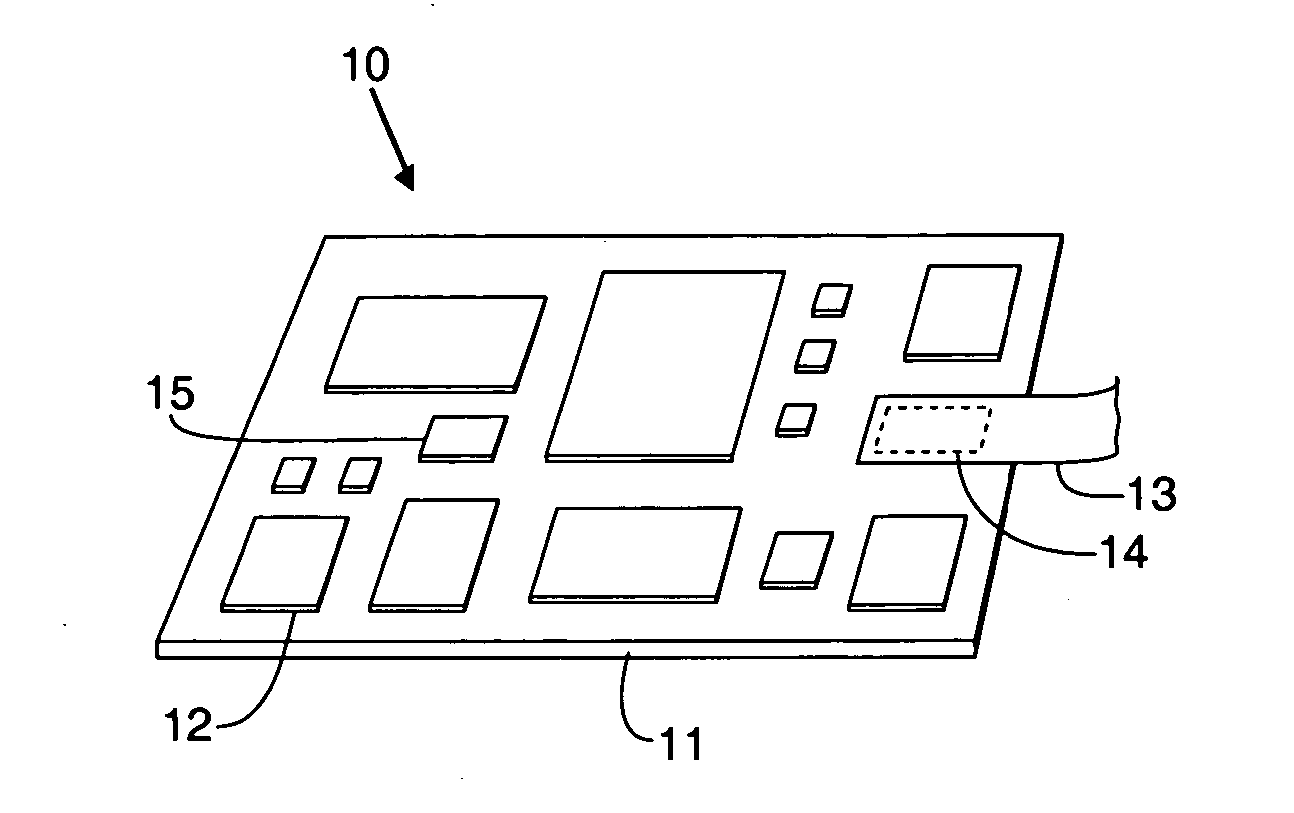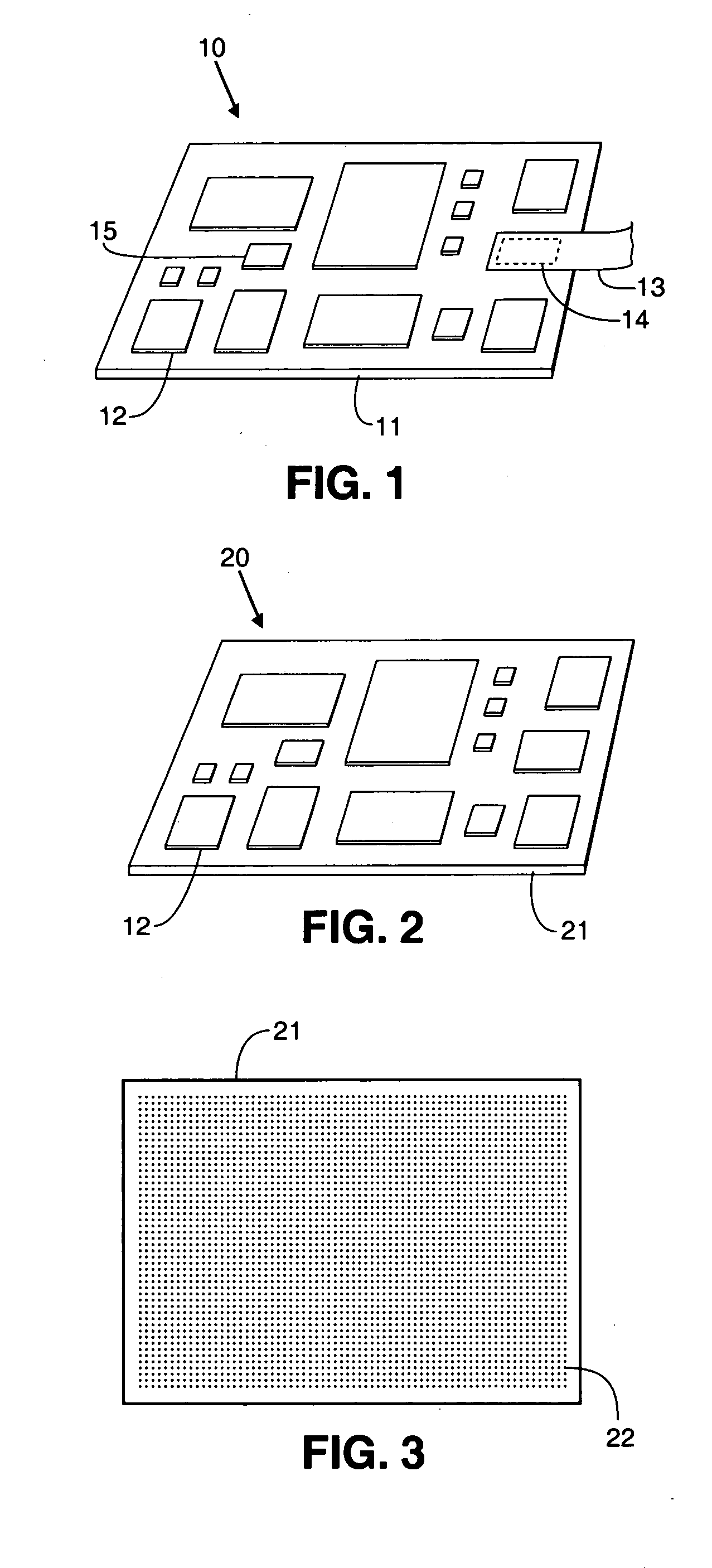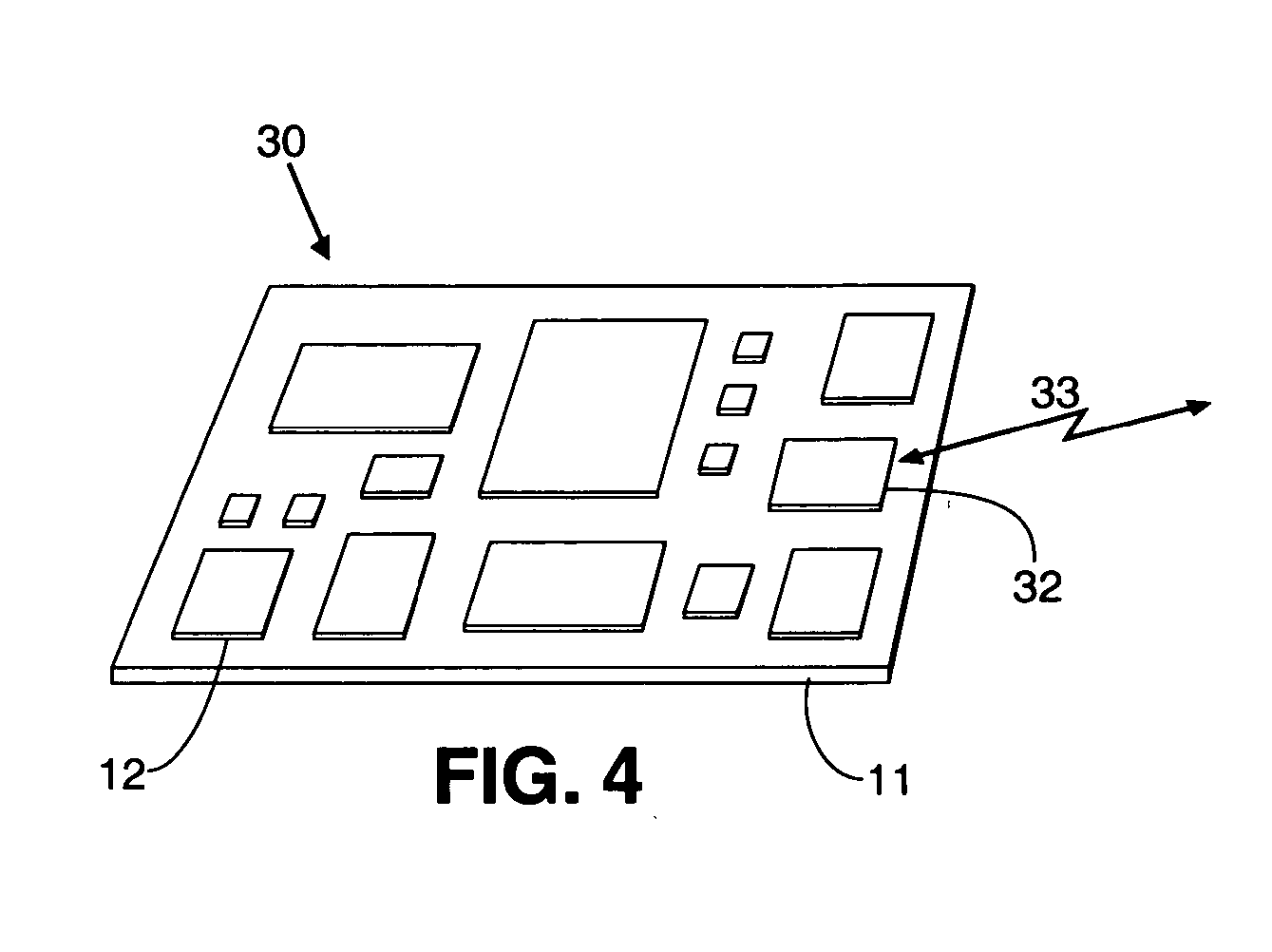Copper-faced modules, imprinted copper circuits, and their application to supercomputers
- Summary
- Abstract
- Description
- Claims
- Application Information
AI Technical Summary
Benefits of technology
Problems solved by technology
Method used
Image
Examples
Embodiment Construction
[0065]FIG. 1 shows an electronic module 10 having a conductive substrate 11. (base layer), and multiple integrated circuit chips (IC chips) such as 12 flip chip mounted thereon. Module 10 receives power and communicates with other electronic systems via module access cable 13, utilizing module access port 14, as will be further described. The attachment of IC chips 12 and access cable 13 preferably employ a new version of flip chip assembly wherein each input / output pad of each chip and each cable preferably has a stud bump attached, and each stud bump mates with a well filled with solder formed on top of the interconnection circuit (not shown) fabricated on substrate 11. Detailed manufacturing steps for fabricating these circuits will be described. IC chip 15 may be a test chip, as will be further described. The material of conductive substrate 11 is preferably copper or a dispersion-strengthened copper (DSC). FIG. 1 is an example of a module with a single conductive face.
[0066]FI...
PUM
| Property | Measurement | Unit |
|---|---|---|
| Length | aaaaa | aaaaa |
| Length | aaaaa | aaaaa |
| Electrical conductivity | aaaaa | aaaaa |
Abstract
Description
Claims
Application Information
 Login to View More
Login to View More - R&D
- Intellectual Property
- Life Sciences
- Materials
- Tech Scout
- Unparalleled Data Quality
- Higher Quality Content
- 60% Fewer Hallucinations
Browse by: Latest US Patents, China's latest patents, Technical Efficacy Thesaurus, Application Domain, Technology Topic, Popular Technical Reports.
© 2025 PatSnap. All rights reserved.Legal|Privacy policy|Modern Slavery Act Transparency Statement|Sitemap|About US| Contact US: help@patsnap.com



